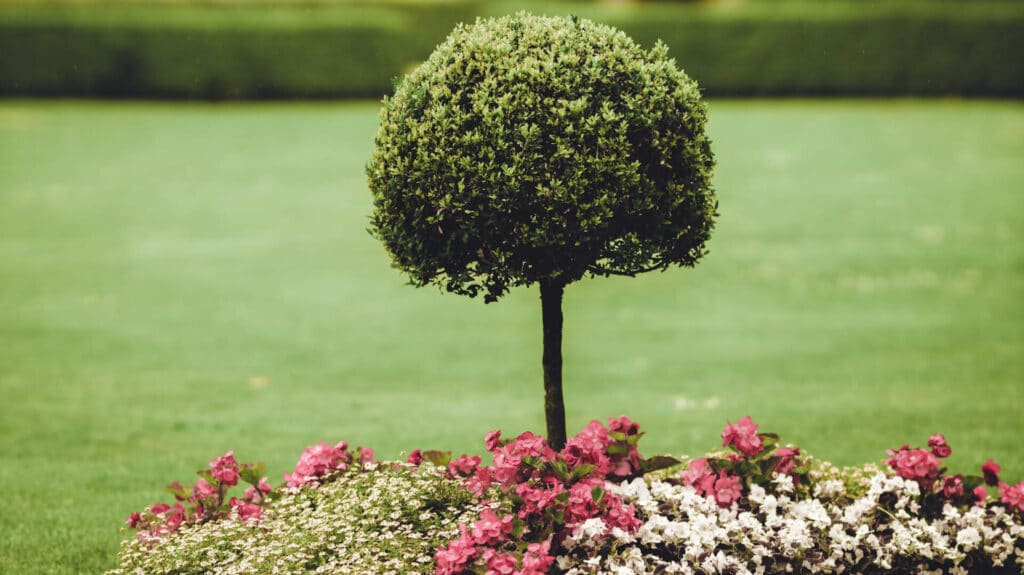Understanding Modern Synthetic Turf Technology
Gone are the days when artificial grass looked obviously fake. Modern synthetic turf has undergone an incredible transformation, incorporating cutting-edge materials and manufacturing techniques that create remarkably realistic alternatives to natural grass.
You’ll find today’s products feature thoughtfully designed multi-colored blades with varying heights and textures, a far cry from the uniform green carpets of the past.
These innovative features, combined with enhanced backing materials and state-of-the-art drainage systems, deliver a product that’s both beautiful and functional. What’s more, the UV-resistant fibers maintain their vibrant color and structural integrity for years, making synthetic turf an increasingly attractive option for both homes and businesses.
Environmental Benefits of Synthetic Turf
Eco-friendly landscaping choices, synthetic turf stands out as a clear winner. Perhaps the most compelling advantage is its dramatic water conservation potential, while traditional lawns gulp down thousands of gallons annually, artificial grass needs just occasional cleaning to stay fresh.
But the environmental benefits don’t stop there. By eliminating the need for chemical fertilizers, pesticides, and herbicides, synthetic turf helps protect local ecosystems and water supplies from harmful runoff.
Cost Analysis and Long-term Investment
Don’t let the initial price tag of synthetic turf installation scare you away, the long-term financial benefits often make it a smart investment. Many homeowners partner with artificial grass installers in Oklahoma City to ensure their investment pays off through proper installation and maximum longevity.
Most property owners find they recover their initial costs within just 3-5 years through significantly reduced maintenance expenses. Think about the savings: no more water bills from constant irrigation, no more spending on mowing services, fertilizers, or replacement sod. Plus, synthetic turf maintains its pristine appearance year-round, potentially boosting property values and curb appeal.
When evaluating the return on investment, consider the comprehensive savings over the typical 15-20 year lifespan of quality artificial grass.
Installation Considerations and Best Practices
Success with synthetic turf starts with proper installation, it’s crucial for achieving optimal performance and longevity. The process requires careful attention to detail, beginning with thorough site preparation and existing vegetation removal. Creating a stable base layer with appropriate drainage is essential, as is selecting the right infill materials and applying them correctly.
Professional installers know how to handle tricky elements like slopes, curves, and transitions between different surfaces. They’ll also ensure proper pile direction, blade density, and secure the turf using methods that prevent shifting or buckling over time.
Maintenance and Care Guidelines
While synthetic turf dramatically reduces maintenance compared to natural grass, some basic care helps maintain its beauty and functionality. Regular brushing keeps the fibers standing tall and distributes infill materials evenly across the surface.
It’s important to remove leaves and debris promptly to prevent organic matter from decomposing on your turf. An occasional rinse keeps things clean and fresh, especially in areas that see frequent use. Pet owners will appreciate that specific cleaning protocols can effectively manage odors and maintain hygiene. Following these simple maintenance guidelines helps ensure your synthetic turf performs beautifully for years to come.
Choosing the Right Type for Your Needs
Selecting synthetic turf isn’t one-size-fits-all, the right choice depends on your specific situation and preferences. Different varieties offer varying pile heights, blade shapes, and density levels to suit different uses. Are you creating an athletic area?
You’ll want a durable product with good shock absorption and traction. Looking to enhance your home’s landscape? Consider options that prioritize natural appearance and soft texture. Local climate plays a role too, areas with intense sun need UV-resistant varieties, while shaded spots require products that resist moisture-related issues.
Think about your specific needs, including foot traffic patterns, pet usage, and weather conditions when making your selection.
Common Myths and Misconceptions
Let’s clear up some outdated ideas about synthetic turf. Thanks to technological advances, modern products have effectively addressed past concerns about artificial appearance, heat retention, and environmental impact.
Today’s synthetic grass offers incredibly realistic aesthetics and improved temperature management through innovative materials and installation techniques. With proper installation and maintenance, you won’t have to worry about drainage issues, unpleasant odors, or bacterial growth. Understanding these modern improvements helps property owners make confident decisions about incorporating synthetic turf into their landscapes.
Conclusion
The world of synthetic turf continues to evolve, offering increasingly sophisticated solutions for sustainable landscaping. When properly planned, installed, and maintained, artificial grass proves itself as a practical and environmentally responsible alternative to natural turf.
By combining significant water conservation, minimal maintenance requirements, and impressive long-term cost savings, synthetic turf presents an attractive option for forward-thinking property owners who want beautiful, sustainable landscaping solutions.

